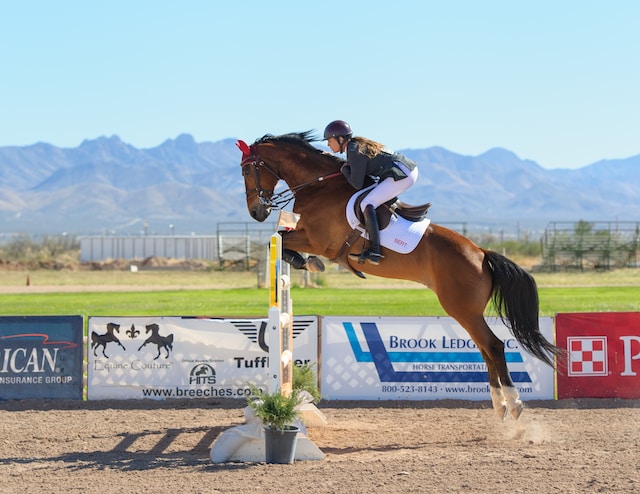Jumping is an exciting and challenging discipline that requires skill, precision, and the proper equipment. A good jumping saddle, short stirrups, a safe helmet, and proper tack are essential.
Show jumps are a series of colorfully painted poles, walls, planks, and other obstacles that vary in difficulty. These include ascending and descending oxers, Liverpool jumps, and water jumps.
Tack
From breeches to PVC pipe, horse jump equipment is essential for a safe and successful competition. The right jumping gear is also vital for training.
Riders should be comfortable walking, trotting, and cantering before jumping. It helps build leg strength and balance. It also allows riders to develop a secure, independent seat that’s important for jumping.
Once you’ve mastered your walk, trot, and canter, try working on small fences called wavelets. These poles, raised just a few inches off the ground, help horses learn to jump and build confidence as they progress. Next, try oxers and spreads. These two vertical poles set a small distance apart to create a broader fence that tests your horse’s ability to judge widths and heights.
Saddle
The saddle is fastened to the horse’s back by a surcingle (or girth) and holds the rider on top of the animal. A good saddle fits the horse’s withers, the sloping area on the horse’s back. You can test the saddle’s fit by squeezing your hand sideways between the saddle tree and the top of the horse’s shoulder.
Jumps like the open water, a table, and a brush fence challenge the horse to judge the distance of an obstacle and then jump it without the risk of falling off or running out at the end. It requires great courage, power, and shortening of muscles to create forward momentum and takeoff impulsion for high, vast jumping obstacles.
As the horse approaches a jump, it lifts its head to assess the obstacle, flexes and compresses its body like a coiled spring, and then powerfully pushes off into an extensor muscle chain.
Stirrups
A stirrup is a lightweight frame or ring that holds the foot of the rider while they are in the saddle. They are usually paired and attached to the saddle by a stirrup leather strap.
Riders will place their feet in the stirrups when riding in the two-point position, removing contact from the seat. It is an excellent way for beginners to develop balance and confidence while riding.
In addition to traditional vertical jumps, the horse may be asked to clear a water jump or wall. These obstacles can be challenging for horses because they are solid and require a different rhythm than a standard vertical. If a rider falls and gets their foot stuck in the stirrup, it can cause serious injury. For this reason, safety stirrups with peacocks are often used for children.
Boots
A horse’s lower leg is a delicate structure comprised of bone, tendons, and ligaments. These structures are exposed to a significant amount of force during jumping when the horse hits a jump pole or other obstacle.
Boots are designed to protect the lower legs of horses, especially in the presence of mud or rough terrain. They are often padded to provide shock absorption and to prevent damage to the horse’s tendons.
Jumping boots have an open front to ensure the horse feels a fence pole and is encouraged to be more careful over obstacles. They also have a durable shell to protect the front leg tendon from interference or strikes. They have a pair of Velcro straps and are locked into place with a vertical strap.
Helmet
The helmet is an essential piece of equipment for horse jumping. This discipline requires speed, precise timing, and jumping ability to complete a course of fences under a specific time limit.
A good quality helmet should offer comfort, be stylish, and be certified to the highest safety standards.
When you put your hat on, it should feel like it’s gripping the back of your head- known as the “lock.” It also shouldn’t shift side to side or up and down. If it does, it’s too loose. The chin strap should be about one finger’s width above your eyebrows. It will prevent the chin strap from coming forward and potentially hitting your ear while riding.

